If you don’t live in a sunny climate where cannabis grows well without much intervention—in other words, if you live in most of the country—you can be forgiven for not trying to grow your own weed.
Even though cannabis is legal in so many places, it’s not available everywhere. Even in legal states, most counties prohibit sales and shops, and taxes can run as high as 29% in some cities for recreational purchases.
Cannabis is expensive, whether you have access or not, but is growing it the solution for your wallet or your schedule?
Depending on where you live and how you set up, outdoor growing might be a possibility. Pretty much anywhere cannabis is legal, as long as you have supplemental lighting, you can grow anywhere from a few nugs to a few pounds.
Indoor growing is an investment, however. You can’t just put a seed in some potting soil and see what happens—you need a game plan, and you need gear. We’re going to talk about everything you need to grow as a beginner, from lights, to tools, to fully automated setups.
Gather your goods
Table of Contents
You can do one plant at a time, or up to six plants in a medium-sized tent. Indoor cannabis can be grown in a soil medium like any other plant, or it can be grown hydroponically with just water. The gear you purchase will depend on these choices, but lights, nutrients, pruning shears, a fan, and possibly a dehumidifier and portable heater are non-negotiable necessities.
Some gear suggestions:
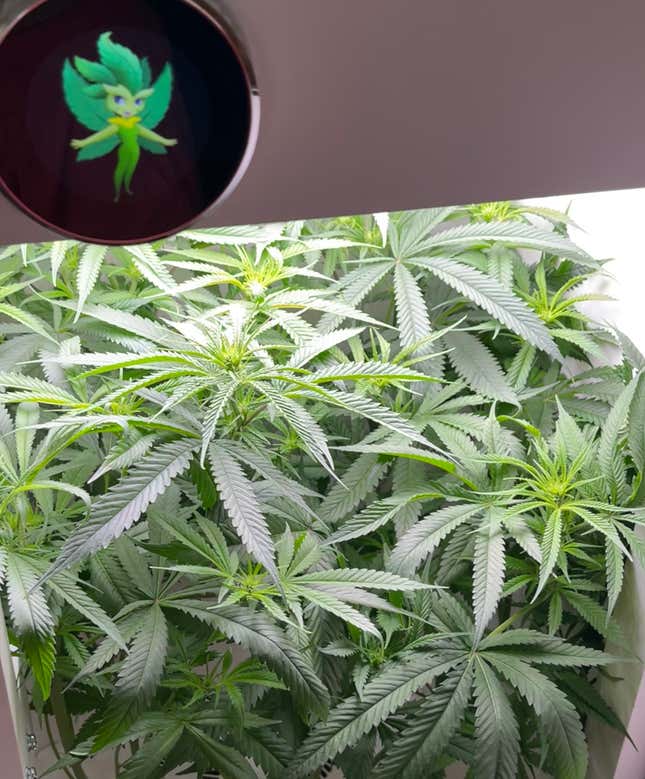
Retailers like Amazon offer grow kits, which the storefronts often pretend are not for cannabis (even though we all know full well that they are), but you’ll want to research reviews thoroughly to be sure the gear matches with your needs, like space, grow environment, etc.
Bundles:
One approach, if you have the funds, is to buy an automated grow box, which is a class of innovation-based electronic devices meant to create perfect conditions and give you notifications for tasks, and are perfect for beginners.
Self-contained and app-directed growing devices take a lot of the guesswork out of the process. There might be an initial investment of anywhere from $500 to $2000, but you could easily harvest that value from the first two plants alone if you’re successful. Devices like the Hey Abby grow box even offer a subscription for nutrients, plus most tools needed to get started right when you open the box.
Building your own DIY grow kit can also become incredibly expensive. Some people invest in climate control, supplemental carbon dioxide, and premium lighting in their basement or closet setups, so weigh how much initial investment matters compared to initial yield—you will get better with each harvest as you learn and can keep harvesting new plants with the same gear repeatedly.
Without the help of an app, you may want to look for a grow calendar to keep track of things like water changes, trimming cycles, and nutrient schedules.
Make some decisions
Once you’ve procured the setup to suit your indoor climate, you’ll need to start growing with either a seed or what’s known as a clone.
Cannabis seeds can be found pretty easily online or purchased from shops in many states, depending on the legality of growing your own, but once you get them to pop, you have to make sure that they are female—a male plant will only grow cannabis seeds, not buds crusted in cannabinoids.
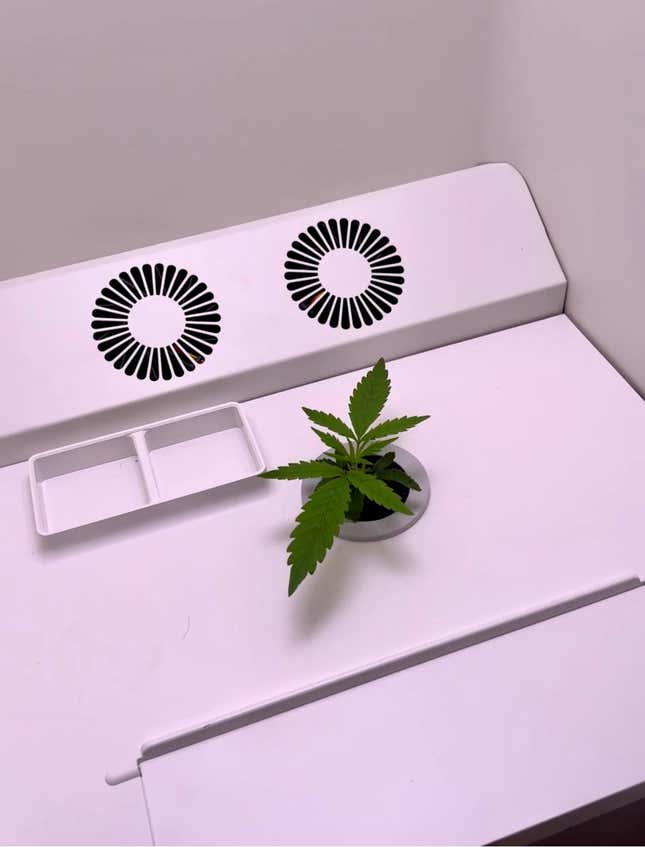
Purchases labeled as “feminized” seeds and clones will take that question off the table most times, but you can still get an errant male, so keep an eye out for seed pods regardless.
Clones are cannabis plant cuttings with roots, taken from a mother plant that is usually grown from seed. Some dispensaries have clones ready to purchase for between $10 and $30, and they will get you a few weeks closer to flower compared to growing from seed.
Clones are also easier for beginners, but no matter what strain you purchase, you have to research its characteristics and preferred environment to adjust your setup. Some strains will flower automatically, while others will respond to the light cycles that you give them.
During the seedling phase, plants will require extra light to help them grow fast and strong, and then they enter the vegetation phase.
Vegetation station
For plants that autoflower, the vegetation stage is a set period of weeks. Non-autoflower plants will vegetate as long as the light conditions allow. Most plants need three to eight weeks to vegetate before creating starter buds that become big flower nuggets.
During this time, you want to keep an eye on how the plant grows in the space that you’re providing to prepare for training. When the plant has five to seven nodes, you snip the top off—what’s called “topping.” The energy gets diverted from vertical growth into the existing branches.
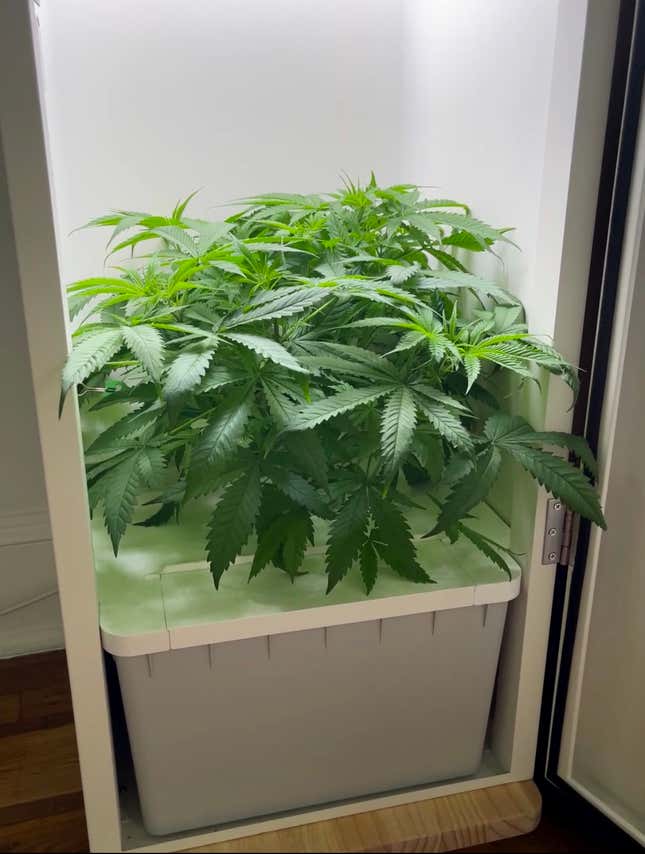
As your plant gets bigger, prune regularly by gently removing fan leaves with super-sharp and clean (this is important) shears. Fan leaves are the dark green leaves that grow directly out of the stem with a big stem of their own, not the smaller leaves coming out right above them.
Training a plant means deploying nets, rope, ties, and other things to spread the branches of the plant out so that light can create as many buds as possible down the stems. If they don’t get enough light, they won’t make big buds, only little guys.
During vegetation, the plants need a regular nutrient schedule to deliver the right combination of plant food to make things grow big and strong, as well as favorable conditions for flowering. Good conditions during vegetation make for great flowers, so no humidity over 60-65%, nothing below 40%, and keep things in between 65-85 degrees ambient temperature.
Flower power
The plant has entered the flowering stage when you start to see, well, tiny flowers. On cannabis plants, they look like little wisps, growing from the main stem where it joins with the stem of a smaller leaf. They eventually grow up and around these stems like hops, with a cone-like appearance, and it takes six to 12 weeks for these buds to get to full size.
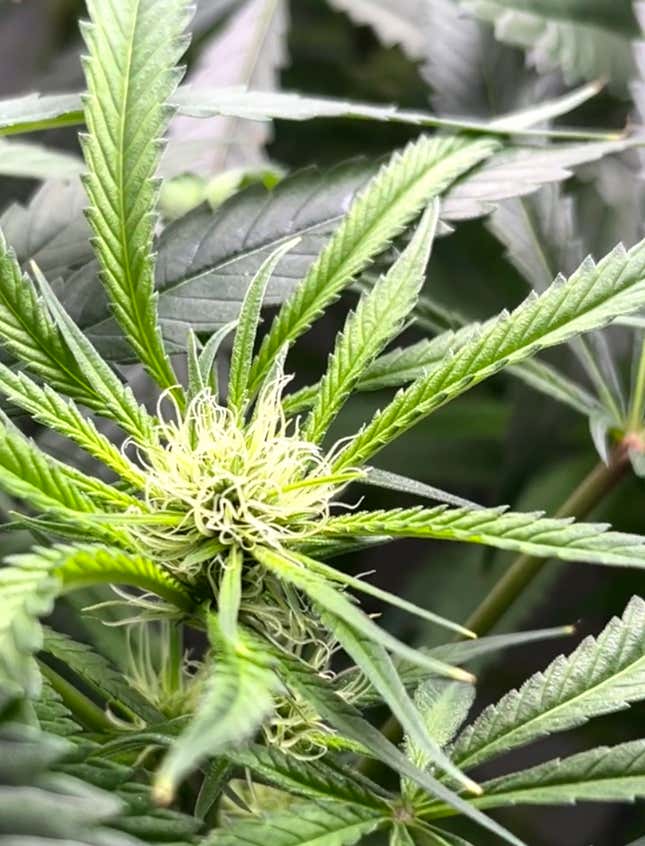
If you have an autoflower clone in an automatic grow box, all you have to do is let the box know that you see flowers, but if you’re doing your own light management, you will have to increase nutrients and create a new light schedule, introducing more darkness, which is what the plant would experience in nature as fall approaches.
With consistent weekly trimming of extra fan leaves, small buds, and small branches towards the bottom of the plant, it will keep ferrying energy to growing big buds on the branches that you kept. Those small branches can be rooted and turned into new clones, and the tiny buds won’t do much and aren’t worth keeping; people call them “larfy buds.”
Important caveats
This is when you make sure the humidity levels are just right and it’s not too dry or moist in your cannabis growing environment—something that technology could be a huge help with. Some weather and humidity monitors use Bluetooth to tell you the deal directly on your phone.
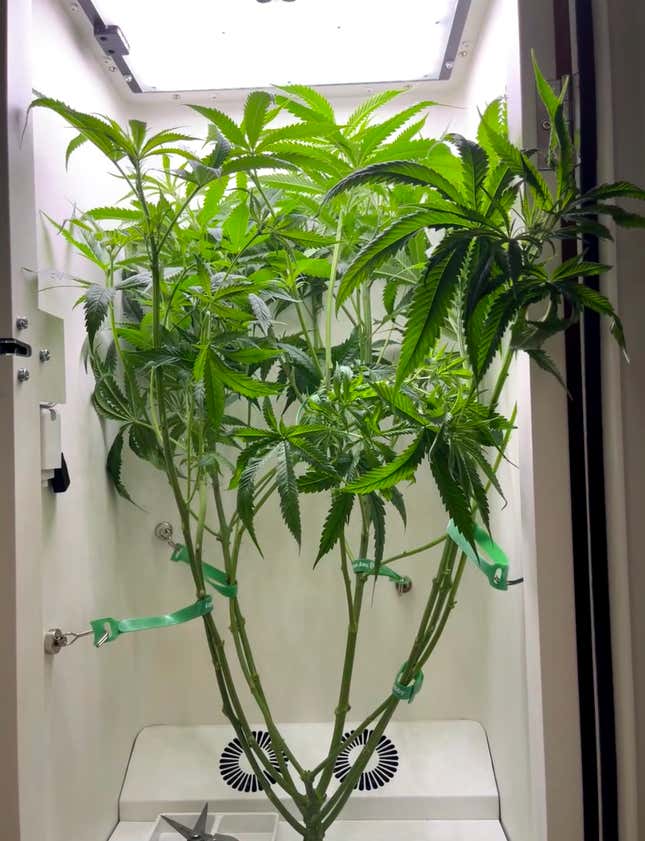
Proper humidity levels and airflow are crucial to a successful grow, and even growing outside in the best weed regions doesn’t guarantee these conditions.
Self-contained tech comes with this built-in, often also as a display, and can often alert you of off conditions, but even if you’re using a high-tech or old-school humidity device, you will need to read the number every day.
Helpful tools:
Having a small dehumidifier and a fan at the ready, or even a portable heating unit on hand, could be the difference between a failed crop and a successful one. Deploy these tweaks as needed to keep things within the range noted above.
Trim religiously. Not only will excess fan leaves and small buds pull energy away from aroma and THC production, they will also increase the humidity and chance of mold in your grow. Always clean your pruning shears before and after any trimming session to prevent cross-contamination.
Flush and harvest
Researching your strain is crucial here—sativas grow one way, while indicas grow another, and hybrids, autoflowers, and other cultivar differences do different things altogether. If you don’t know how many weeks your plant should be flowering, you could harvest too early or too late, jeopardizing its potency.
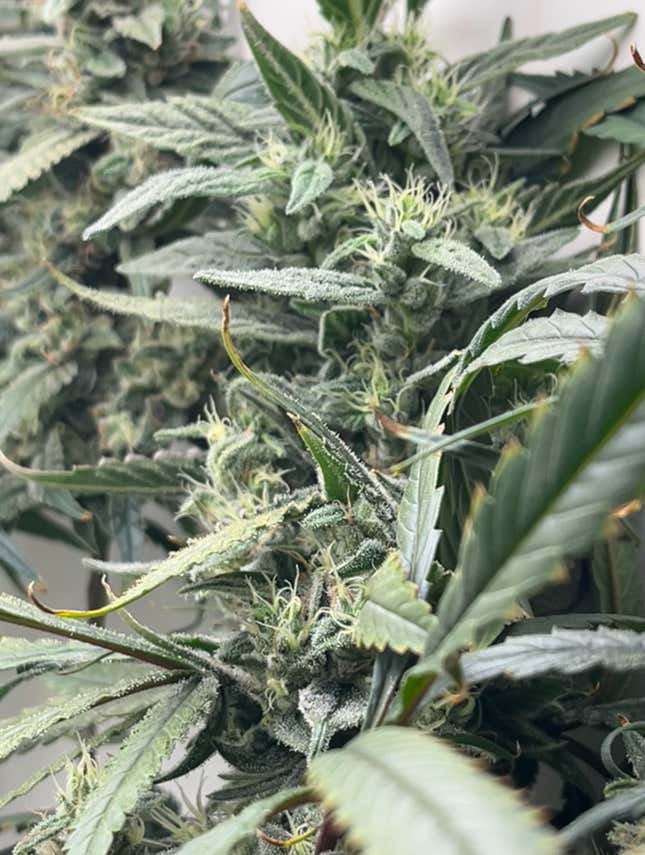
Think the big moment has arrived? Grab a magnifying glass or high-quality camera. Usually, when the teeny tiny crystals—trichomes—are milky and the small hairs sticking out of the buds, called pistils, have started to turn brown, it’s time to stop fertilizing and prepare for harvest.
Flushing is a pre-harvest job wherein your plant is only given plain water and no nutrients. This plant diet lasts for at least a week to make sure the nutrients are not present in the buds. One week after flushing, you’re ready for the next step, which is to prepare your harvest for smoking or eating.
Dry and cure
Cut down your plant and remove any fan leaves present. Snip each branch off with a little bit of cross-stem to act as a hook so you can hang upside down to dry. Drying must happen in a low-moisture environment—this is where the heating element and the dehumidifier might be a big help.
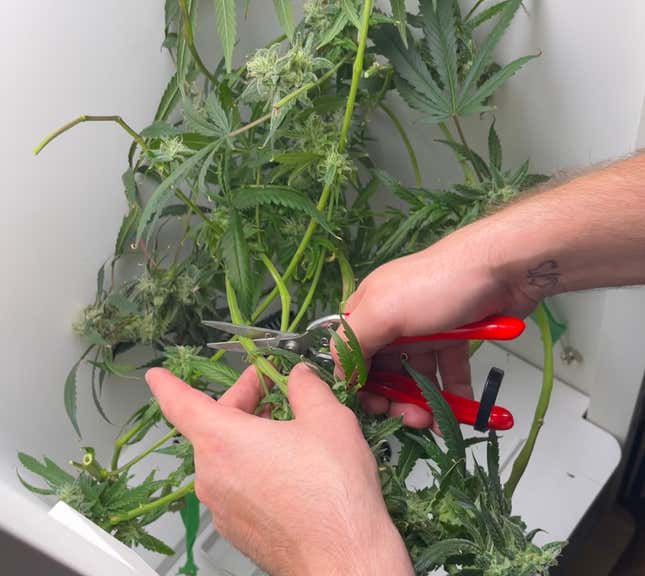
Once the moisture content is low enough to let a stem give an audible snap when you bend it, you can start the curing process. The initial cannabis drying round usually takes three to eight days. After things are dried, it’s a good time to manicure the sugary leaves that lie a bit closer to the buds, so you’re only curing flower, not leaves.
The cannabis curing process allows the cannabinoids in the flower to start to gently age, allowing the naturally present THC-A to convert into smokable THC. It also helps the flowers develop their strong, deep flavor profile, without the overwhelming grassy note that poorly cured cannabis can have.
Put your stash in clean glass jars to cure, and keep them in a cool place with little light. Make sure each is ⅔ full, and “burp” the jars every day to keep humidity low—simply open the jars for a few minutes each day. Curing can take two to four weeks, depending on the strain and the conditions.
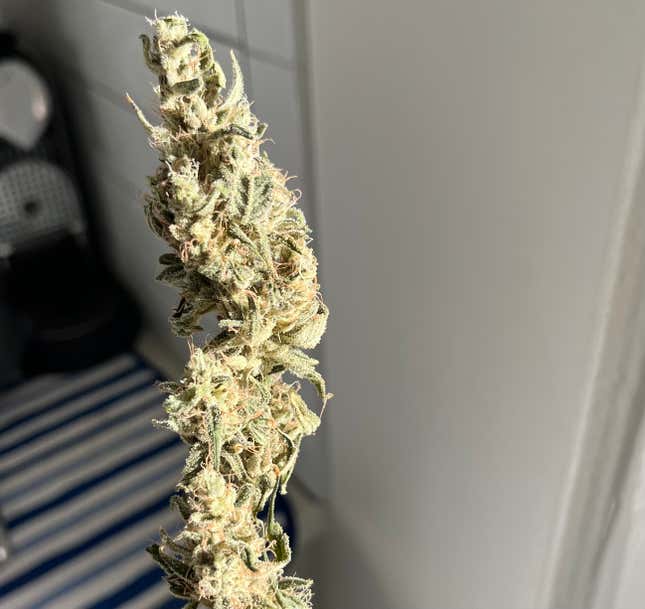
The best way to test the cure is to taste it by smoking it, so take a little sample every week until you get the desired flavor. Leave any cured cannabis in those sealed jars in a dark place for up to 18 months.
Each harvest takes 12-18 weeks, and growing your own cannabis is somewhat labor-intensive, but once you get the hang of it, it’s a pretty rewarding hobby. With the average price of an ounce somewhere around $400 to $500 in most markets, harvesting a few ounces at a time from a plant you invested a little bit less money in, but perhaps more time, could save you a lot, depending on your lifestyle and consumption (or sharing) levels.
